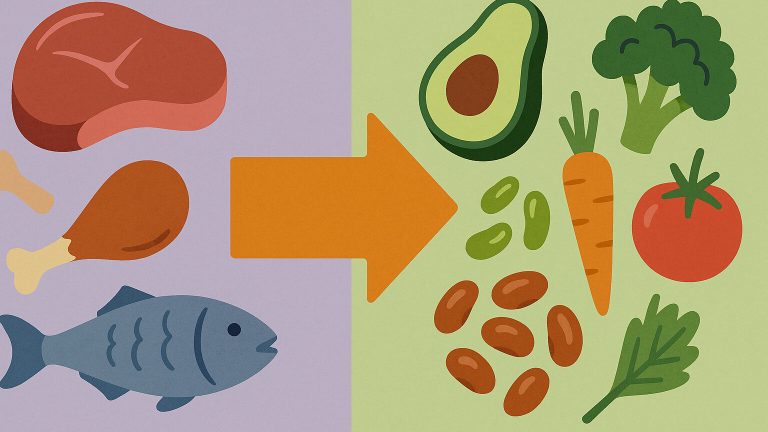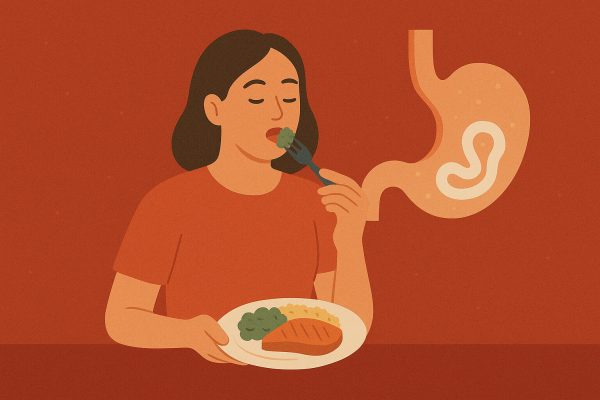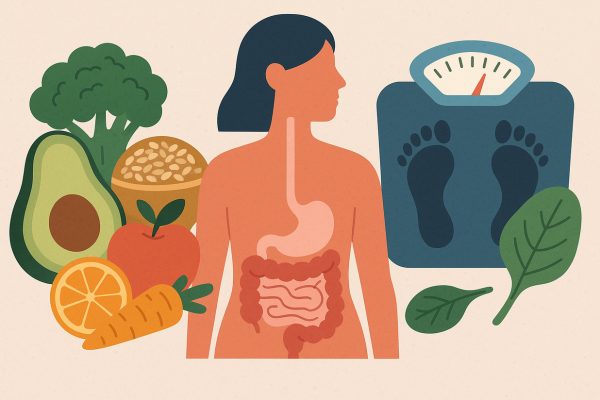Starting with What You Already Enjoy
Shifting to a plant-based diet often works best when it begins with familiar meals. Many traditional dishes already include plant-based elements like vegetables, grains, and legumes. Swapping out a few ingredients can help turn these everyday meals into plant-forward choices without feeling like a complete overhaul.
For example, a taco night can easily turn plant-based by using black beans or lentils instead of ground meat. Stir-fry dishes, pasta, soups, and salads are all flexible templates that can be built around vegetables, tofu, or beans. This way, meals stay enjoyable while gently adjusting to new ingredients.
The key is comfort. By working with food that’s already part of your routine, the change feels less dramatic. Instead of focusing on what’s missing, the spotlight stays on flavors, textures, and satisfying meals that keep you full and happy.
Building the Pantry with Plant Basics
Having the right ingredients on hand makes it easier to prepare plant-based meals without extra stress. Stocking a kitchen with essentials like beans, whole grains, nuts, seeds, and fresh produce lays the foundation for quick and nourishing meals.
A bag of lentils can turn into soup, stew, or patties. Cans of chickpeas can become curry, hummus, or roasted snacks. Brown rice, oats, and whole wheat pasta offer hearty bases for vegetables, sauces, and proteins like tempeh or tofu.
It’s not about buying everything at once. Gradually adding a few new ingredients each week can help you learn how to use them well. As your pantry grows, so do the options for meals that are both plant-based and deeply satisfying.
Finding a Balance of Nutrients
Eating more plants can nourish your body well, but it helps to keep a few nutrients in mind. Protein, iron, calcium, and vitamin B12 are important parts of any diet, and they just require a little planning when meat or dairy aren’t part of the plate.
Beans, lentils, tofu, tempeh, quinoa, and seeds are all strong sources of plant protein. Leafy greens, fortified plant milks, almonds, and broccoli offer calcium. Iron can be found in lentils, spinach, and chickpeas. For B12, many people choose a supplement or fortified foods.
Learning to build meals with these nutrients in mind helps keep energy levels steady and supports overall wellness. Most of the time, whole foods do the heavy lifting. A simple stir-fry with tofu, greens, and brown rice can check a lot of boxes at once.
Making Meals More Satisfying
One common concern with shifting to a plant-based diet is whether the food will be filling enough. Plant-based meals can absolutely satisfy hunger—you just need to think a little differently about what fills you up.
Foods with fiber, healthy fat, and protein tend to keep you full longer. This means combining things like beans and rice, peanut butter and whole-grain toast, or a veggie burger with avocado and a side of roasted potatoes. Soups, stews, and grain bowls can also be deeply hearty.
Seasoning also matters. Using spices, herbs, citrus, and plant-based sauces makes meals more flavorful and enjoyable. A dash of tahini, a spoonful of pesto, or a sprinkle of nutritional yeast can take a basic meal and give it something special.
Trying New Foods Slowly
Shifting to a plant-based diet doesn’t mean changing everything overnight. It helps to try one or two new foods or recipes at a time and see how they fit into your routine. This keeps the experience fun and removes pressure.
Maybe that means trying tofu once this week or buying a plant-based milk you’ve never had before. You might make one new meal each week and stick with familiar options the rest of the time. Small steps during Nutrition transition keep the change realistic and build habits that stick.
Trying new foods also expands your cooking confidence. Over time, your favorite recipes may shift naturally. A grain bowl, a veggie stir-fry, or a lentil stew might become go-to meals without effort or force.
Navigating Social Events with Ease
Eating with others doesn’t have to be complicated while shifting to a plant-based lifestyle. With a little thought and communication, it’s easy to find common ground at restaurants, family dinners, or gatherings with friends.
At potlucks or parties, bringing a dish you enjoy is a kind gesture and ensures there’s something you can eat. At restaurants, looking over the menu in advance or asking for plant-based options makes ordering simple. Many places are happy to make adjustments.
The goal is flexibility, not perfection. Even if your plate isn’t fully plant-based at every gathering, small choices still matter. Over time, others may even become curious and supportive of your new eating habits.
Listening to Your Body’s Feedback
Everyone reacts a little differently to changes in their diet. As you shift to eating more plants, your body might respond with more energy, better digestion, or even a few unexpected adjustments. Paying attention helps guide your choices.
Some people find they feel lighter or more focused. Others notice they need more snacks or a slightly higher protein intake to stay satisfied. There’s no one-size-fits-all version of plant-based eating—it’s meant to be personal and adaptable.
Keep notes or simply check in with how meals make you feel. If something feels off, adjust and try again. The goal is to find a version of this lifestyle that supports your daily energy, mood, and long-term well-being.
Eating Out and Shopping Smart
Going plant-based doesn’t mean you’re stuck in the kitchen. Many restaurants now offer options that align with a plant-forward lifestyle. Even grocery stores are expanding their sections for plant-based products, making meals easier to prepare at home.
Some menus have symbols for plant-based meals, or servers can suggest customizations. Ethnic restaurants often offer naturally plant-based dishes, like Thai curries, Indian lentil dishes, or Mediterranean hummus plates. At grocery stores, frozen veggies, canned beans, and quick grains can help make weeknight dinners faster.
Planning ahead just a little makes eating out and shopping feel simple instead of stressful. Keep a few favorite ingredients stocked at home, and know which restaurants in your area have options that feel right for you.
Getting Support and Ideas
A shift in eating style can feel easier when you don’t go it alone. Having people to share recipes, talk about challenges, or even eat meals with can make the change feel more natural. Whether it’s a friend, family member, or online community, support helps.
There are also plenty of blogs, cookbooks, and videos that offer plant-based recipes and ideas. Trying out new meals from different cultures adds variety and keeps food exciting. Even just seeing what others are eating can give you ideas for your next grocery run.
If you’re not sure where to start, pick one meal each day to focus on—like switching breakfast to plant-based first. That way, the rest of your routine stays stable, and you build confidence step by step.
Staying Consistent Without Pressure
The long-term success of shifting to a plant-based diet depends more on consistency than perfection. Missing a day or eating something outside the plan doesn’t undo your progress. What matters is your overall direction.
The goal is to build habits that feel kind to your body and sustainable for your lifestyle. That might mean a few plant-based meals a week at first, then more as your comfort grows. Flexibility helps people stay with it.
Let the process unfold naturally. The more you enjoy the food, the easier it is to stick with. Over time, what began as a change becomes part of how you live—steady, nourishing, and rooted in care.




